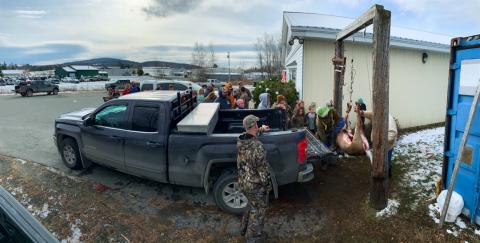Integrating Genetic and Ecological Data Using a New Circuit Theory Approach to Measure and Map Wildlife Connectivity Across the Northeast

The northeastern United States represents a vital region for wildlife connectivity. The region provides key habitat that allows for movement and genetic exchange of animals across several states and provinces, which promotes healthier and more resilient populations. It also represents a critical linkage for movement of species northward as climate conditions change. However, habitat fragmentation, alteration, and loss represent persistent conservation problems that substantially impact wildlife populations by limiting how and where species move across the landscape.
Non-profit organizations, state and federal agencies, and academic researchers have made numerous attempts to measure, map, and identify wildlife connectivity. However, nearly all efforts have been assessments of physical and ecological requirements of species and have largely neglected genetic characteristics, which are critical to understanding animal movement across the landscape.
NSRC researchers will integrate ecological and genetic data using a new circuit theory approach to map connectivity for 10 managed species with high ecological, economic, and cultural importance: moose, deer, bear, bobcat, coyote, red fox, gray fox, fisher, marten, and turkey. Their goal is to provide a precise and comprehensive depiction of wildlife connectivity across the region that can be used to support management decision-making at multiple spatial scales. Researchers will apply the approach to the Green Mountain National Forest with partners at the USDA Forest Service to evaluate effects of routine forest management activities on connectivity to improve strategic decision-making that maximizes benefits for species while considering other objectives. They will develop a decision-making tool for the Green Mountain National Forest that can be applied to other forest management issues in the region.
